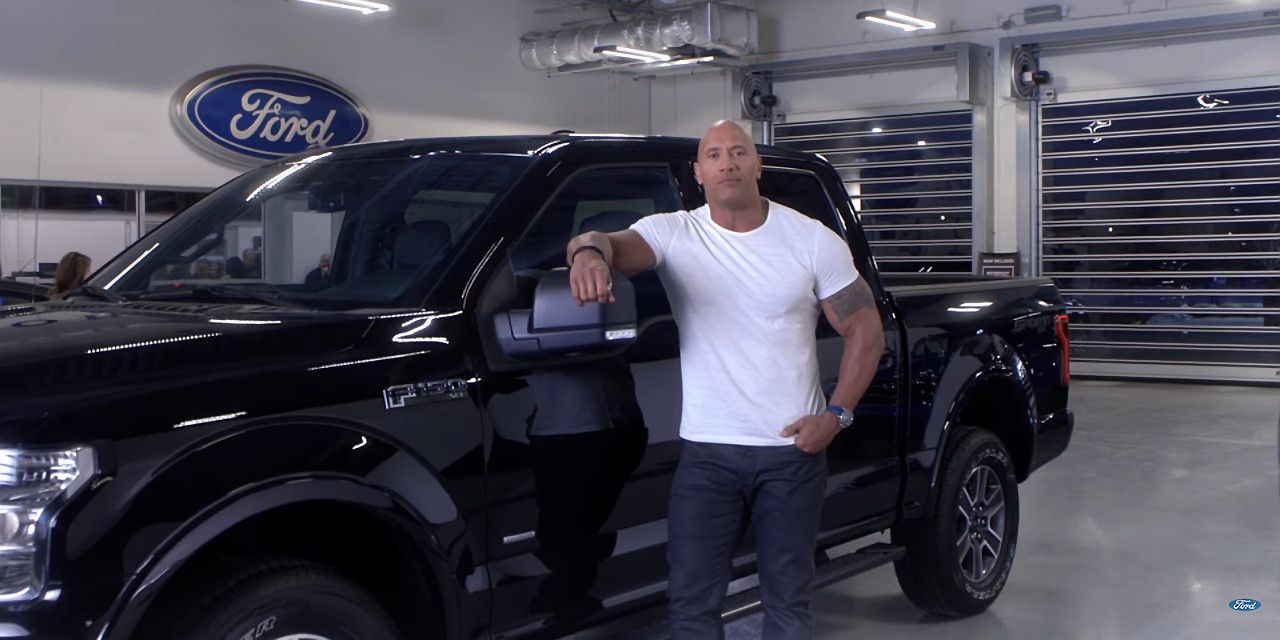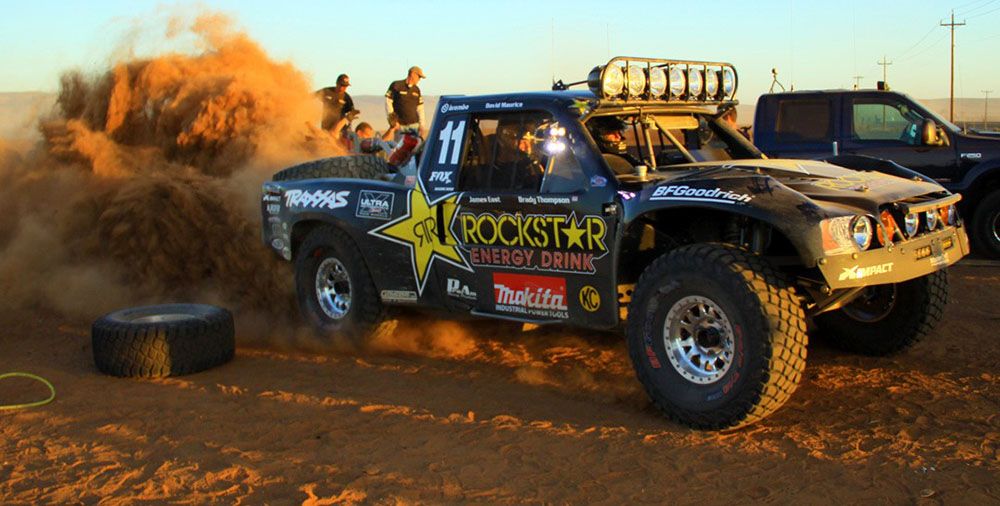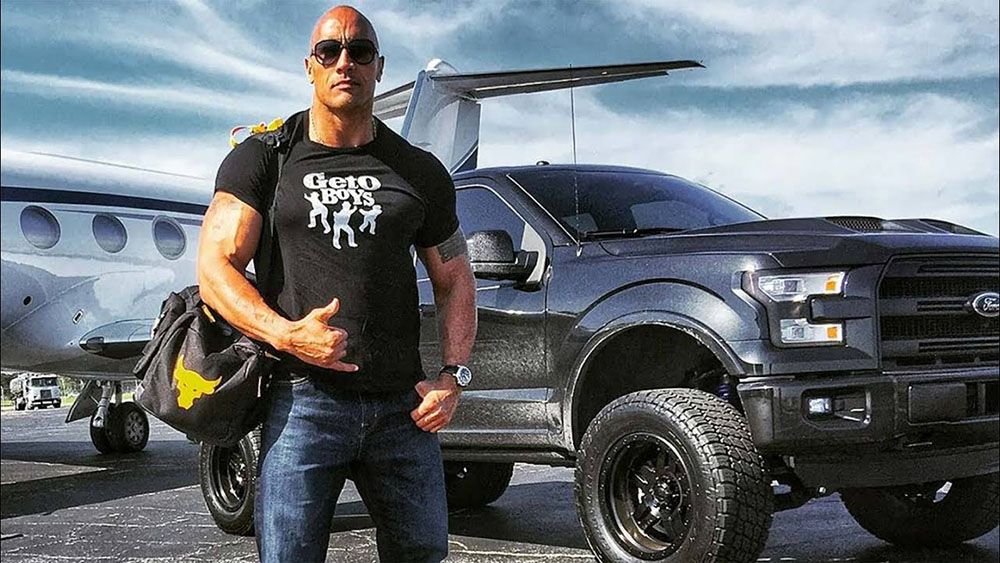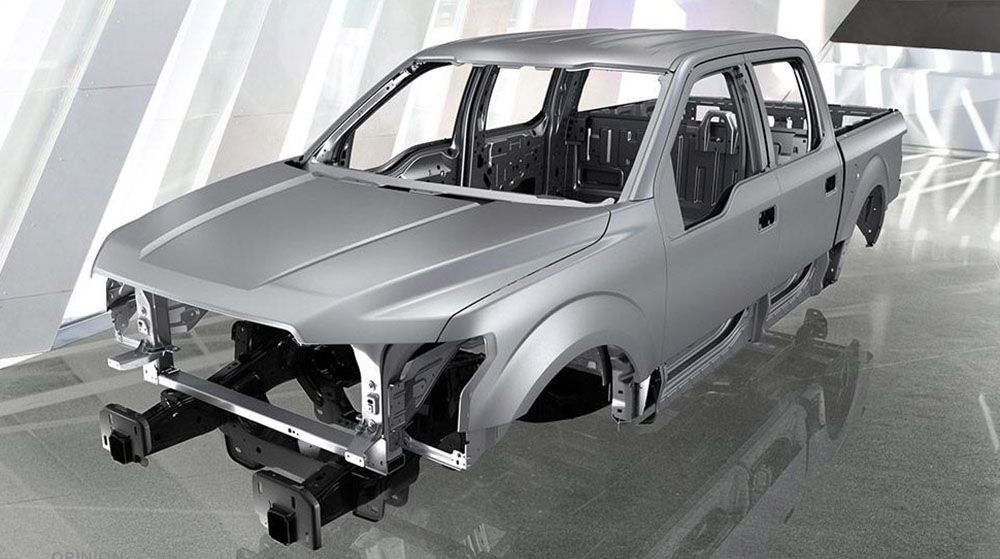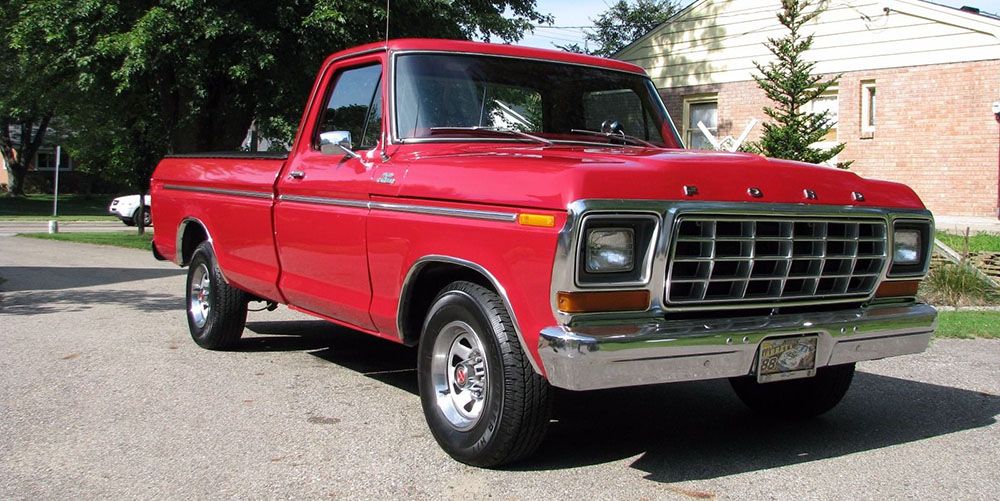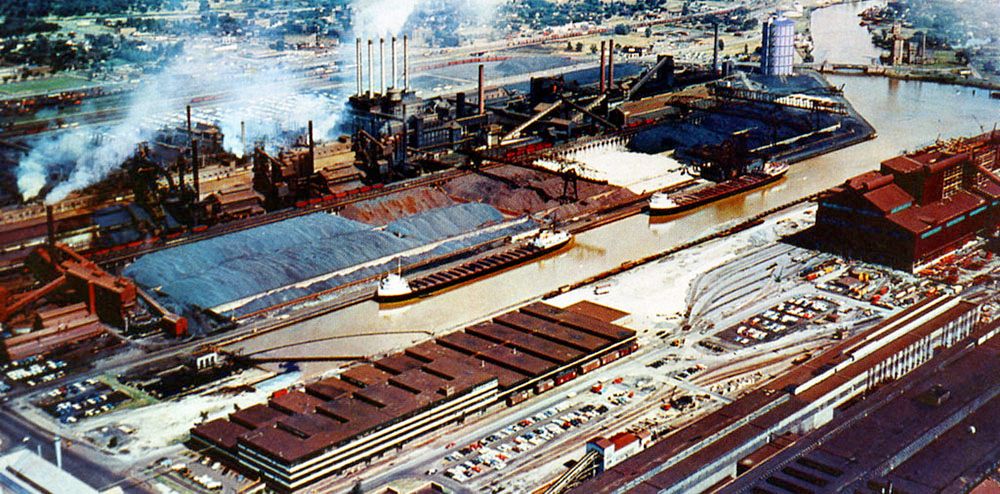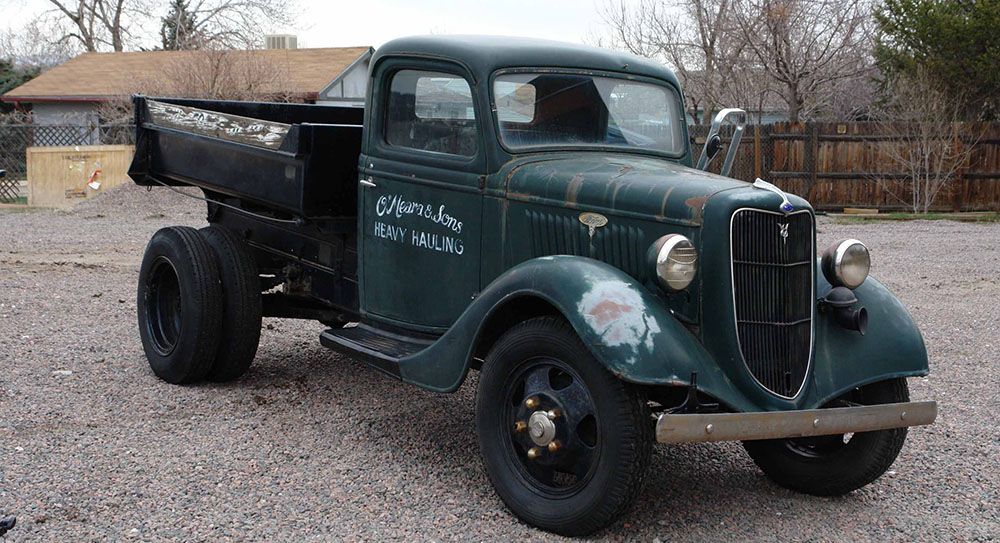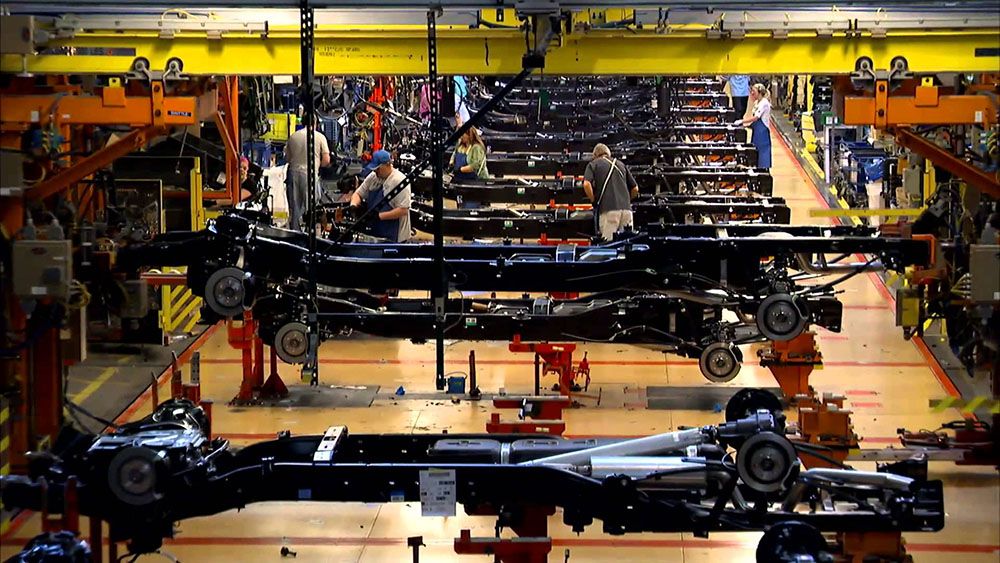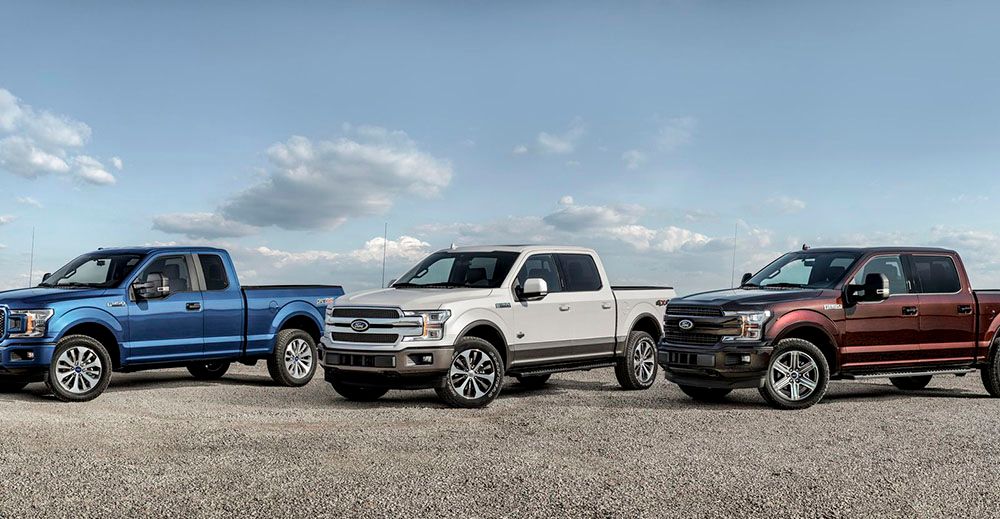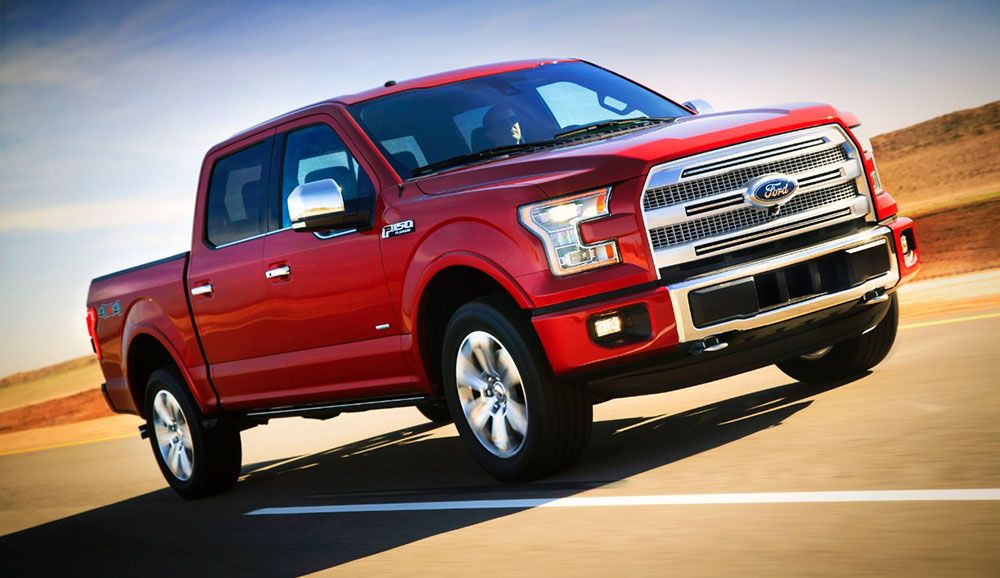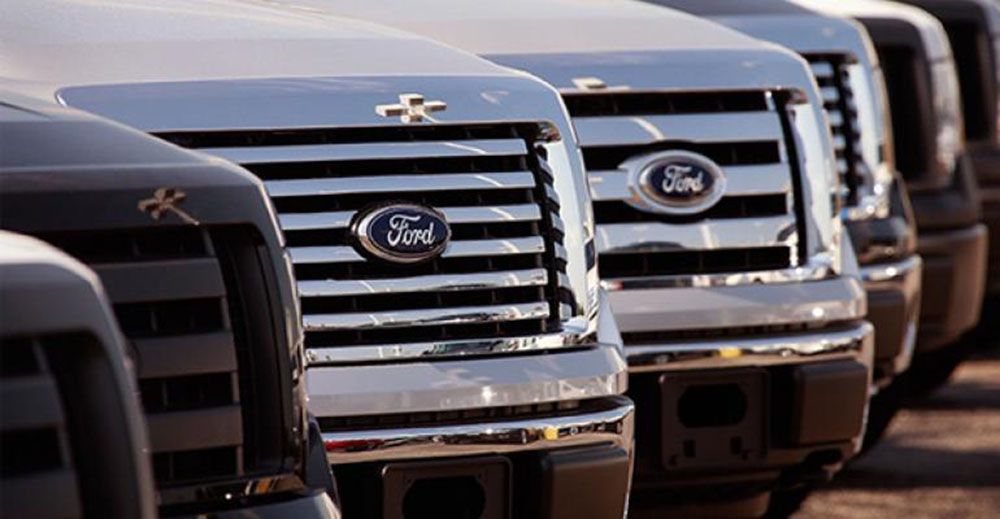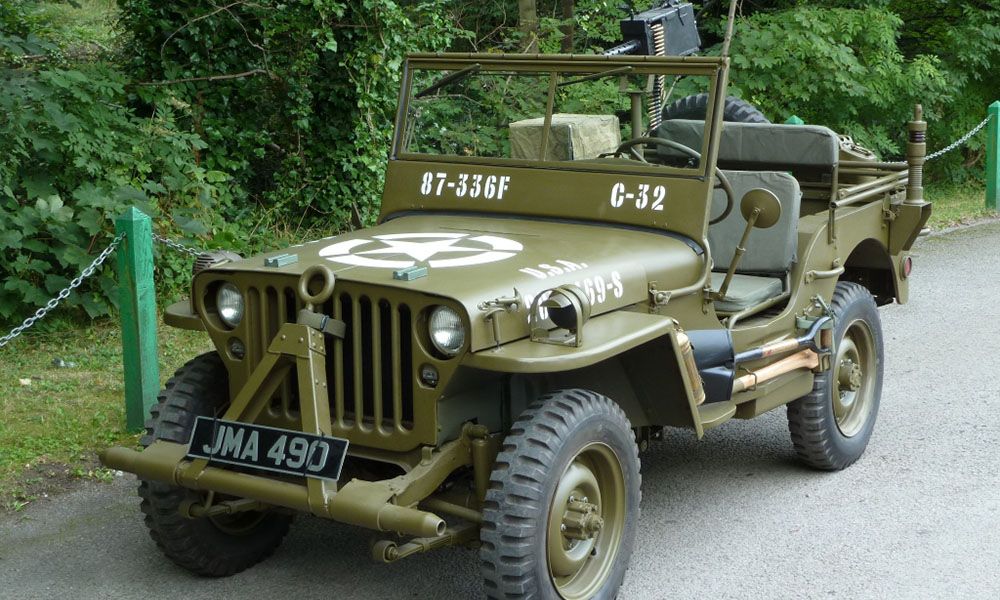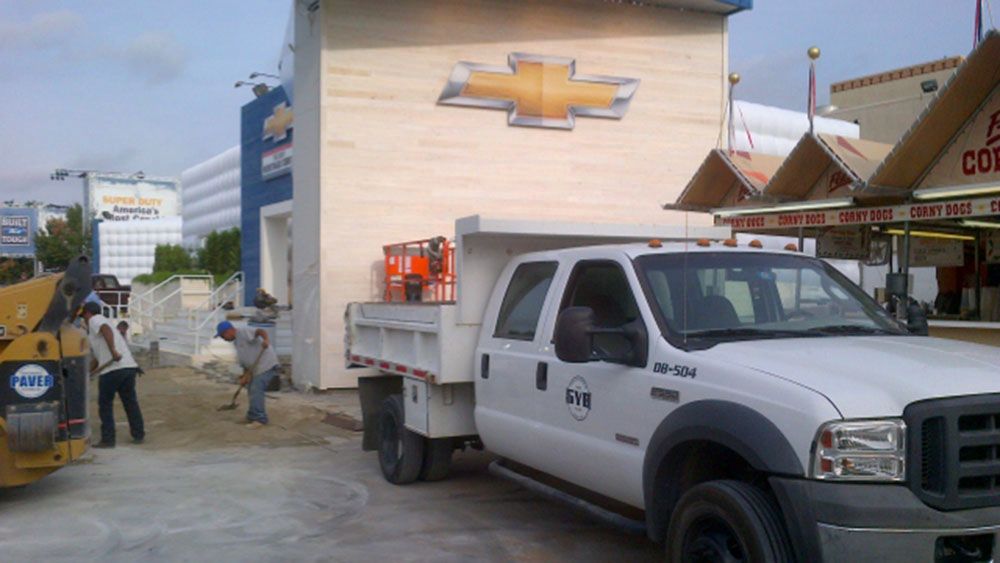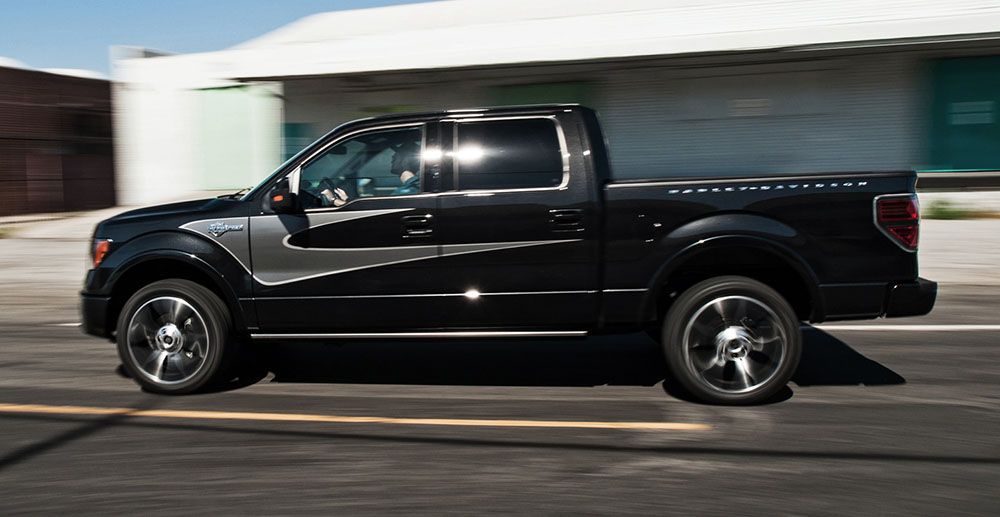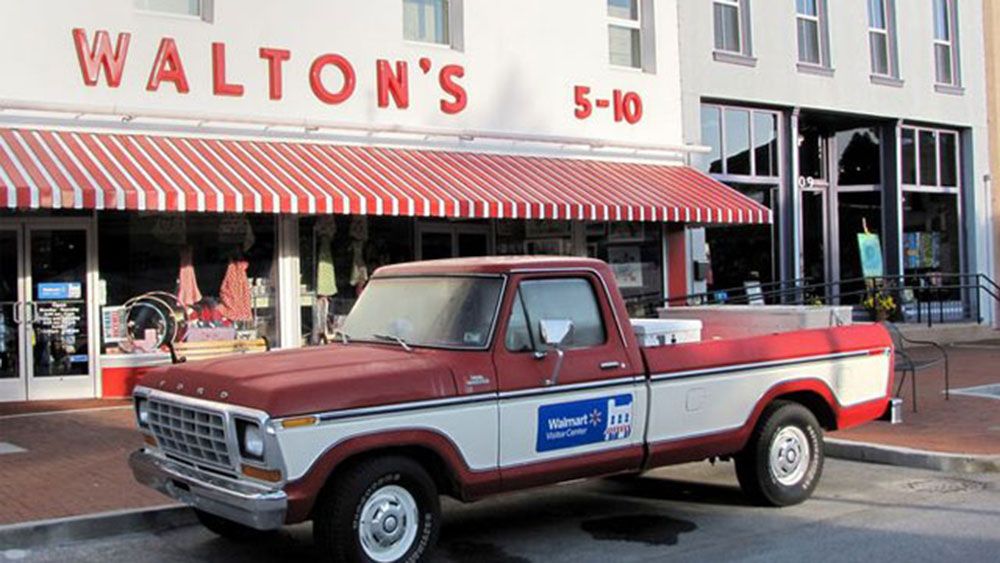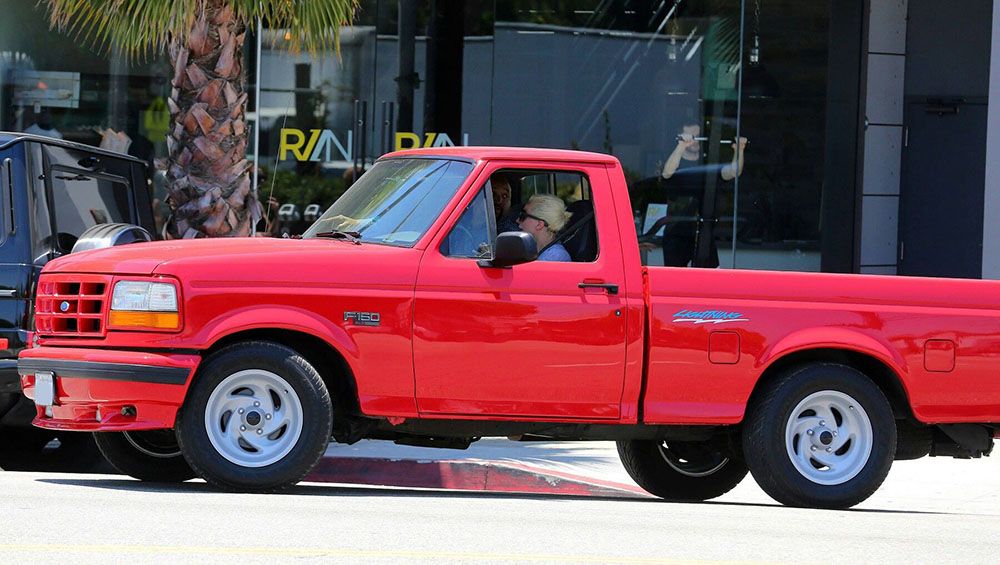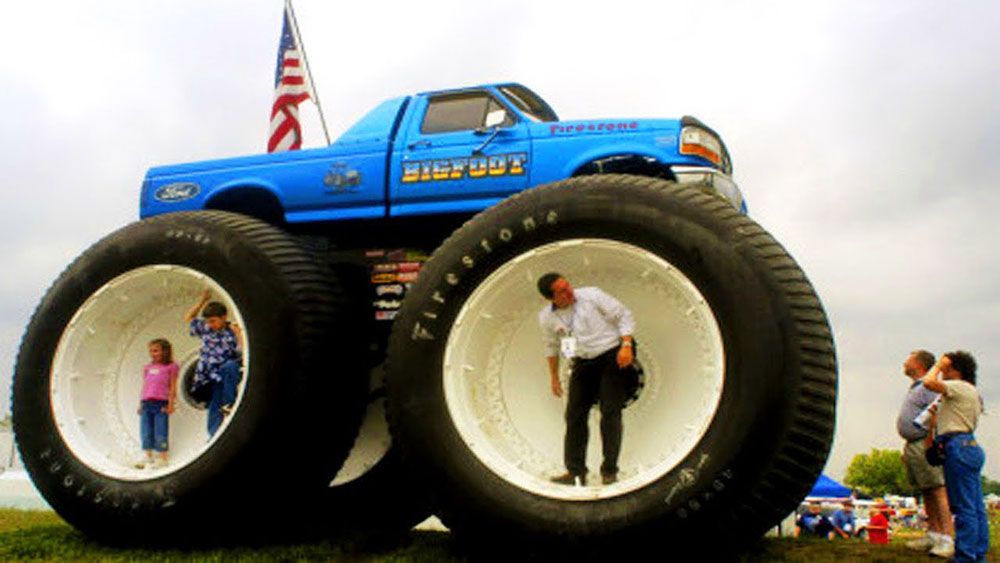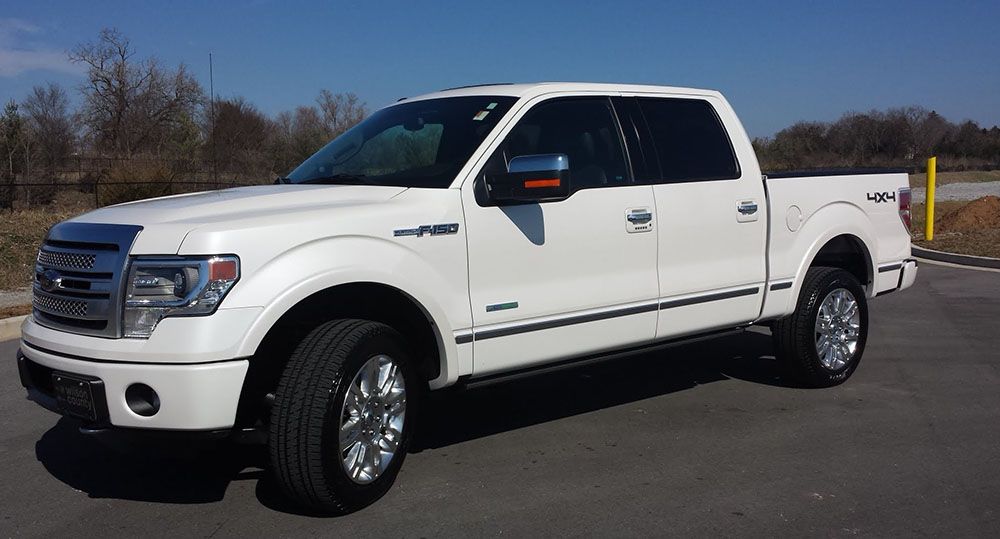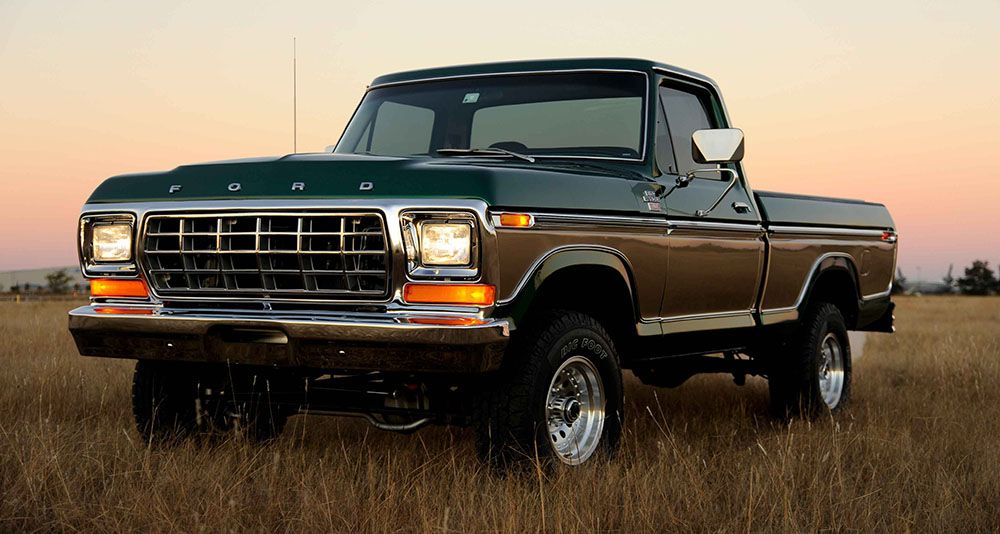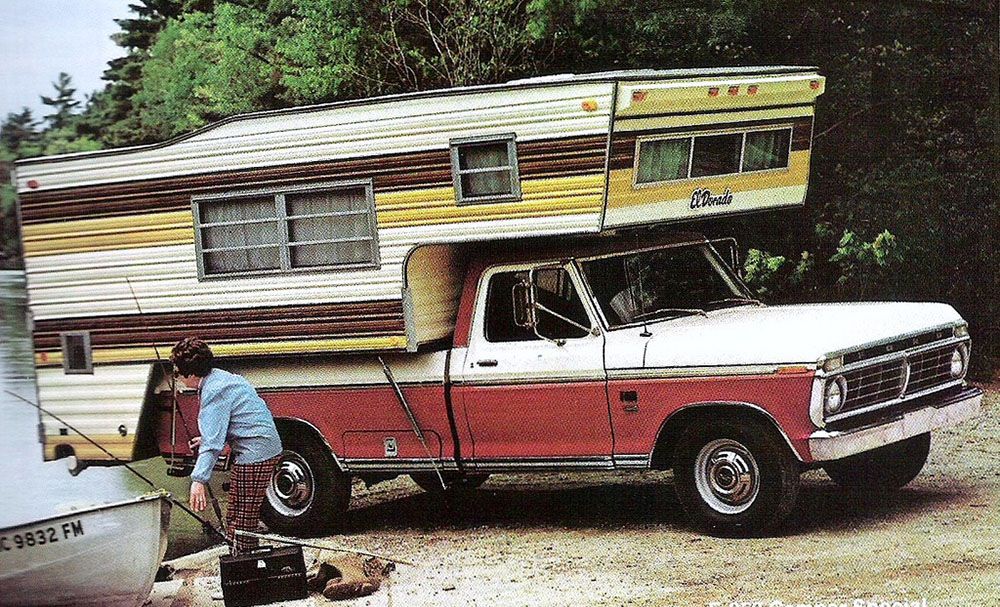In May 2018, CNBC news headlines proclaimed that Ford had suspended all F-150 production. Clearly, this caused consternation among all Ford fans, for the Ford-150 is the most iconic and heavy-duty rollout so served by the auto kitchens of Ford. Luckily for most of America looking to buy Ford pickups, this was no ultimate decision by the company that earns a quarter of its profits from the F-150 sales alone. A fire at the parts supplier was the reason behind this temporary holdup. According to CNBC, “an explosion and fire at Meridian's facility in Easton Rapids, Michigan, completely knocked out production of components used in the instrument panel of the F-150.”
However, despite production coming to a grinding halt and some thousands of workers being temporarily laid off in Ford’s Dearborn and Kansas City truck plants (as well as the Kentucky plant), sales won't be affected. The reason behind this is that it takes approximately 76 days for an F-150 to sell, so dealers and plants have some layby stock to fall back upon. The company showed no visible queasiness to the obvious financial setback they could've hit, and despite it all, production resumed after a week, meaning, the F-150 series is here to stay for sure. Luckily, Ford managed it so that none of its other bestselling trucks got affected by the fire, and we mean the Ford Expedition, the Lincoln Navigator, and the Ford Explorer SUVs. So basically, come hell or high water, Ford is likely to keep producing its awesome trucks that the American public is keen on. On that note, here are some 20 secrets and facts about the Ford pickup trucks that you may not have known about.
20 Ford Did A Secret Torture Test Of The 2015 F-150
The 2015 F-150 was named as the American truck of the year for plenty reasons—mainly because it became more lightweight, and, in doing so, faster than the competition. According to Car Connection, “Ford claims results in overall weight loss of more than 500 pounds from last year's roughly comparable models. The slimming enables one great new downsized engine, increases the capability of the remaining power plants, and is said to boost fuel economy by 5 to 20 percent.”
But Ford, way back in 2013, had itself run a secret torture test on the new F-150 they launched in 2015. Talk about preparation... And they did the test in public, not that anyone noticed. According to Car and Driver, the test happened in the 2013 Baja 1000 off-road race right under everyone’s noses.
What Ford did was rather clever–they took the 2013 model of the Ford and stamped an aluminum model of it, which they then hooked onto a 2015 model chassis. This way, they tested for both the strength of aluminum as well as the new chassis. To this specially designed Ford F-150, they also added the new 2.7-liter Eco Boost V-6 engine and then put the truck to work to test for all that could possibly go wrong.
19 Despite Being Huge, The F-150 Cannot Dwarf The Rock
Most celebrities own not just one but many a car, and the more expensive the car, the more passionate they seem about it. An exception has to be Dwayne “The Rock” Johnson, who seems to have a natural affinity for his 2016 Ford F-150. Why? Well, Johnson stands pretty tall at some six feet and five inches and also owns rock-like muscles–which makes him one big man from just about any which way. If you think he can fold that massive body into a Lambo or, well, a Mini Cooper, you’d be very wrong!
According to the News Wheel, Johnson has even poked fun at himself on his Instagram account that he cannot fit into any of the super-expensive supercars that Lamborghini or Ferrari churns out. Which means he needs a truck! And since it’s a truck he needs, he gravitated towards America’s favorite: the Ford F-150.
However, his Ford F-150 isn’t just another truck; it’s a completely customized one. News Wheel states, “Johnson enlisted California Custom Sport Trucks to make quite a few modifications to his F-150 and nicknamed it 'The Bull.' His truck features a lift kit, 5-inch dual exhaust system, tinted windows, custom black matte grille, custom aggressive hood, and an upgraded sound system that he uses to listen to everybody.”
18 The New Ford F-150 Is More Than 90% Aluminum
In 2015, Ford released the all-new Ford F-150. And what Ford did to its most famous truck was turn it almost 500 pounds lighter. And it did it by making almost all of its cab aluminum, 90% in fact. And the bed, 100 percent aluminum.
According to Car and Driver, “the only steel left in the truck was the door latches and hinges, body rivets, mounting studs for fitting bolt-on parts, the cross-door side-impact beams, the majority of the firewall, and, of course, the frame.” The firewall has been retained as steel and not aluminum because steel can control noise, vibration, and harshness far better than aluminum, which is naturally noisy.
Of course, the firewall that Ford trucks have are a double-plate steel with a damping material sandwiched between it to give a noiseless cab. The pickup’s bed is completely aluminum, and Ford justified the use by saying the gauge that was used was thicker than the steel that earlier used to line the trucks. Plus, the auto giant also claimed that aluminum beds would have a better ding and dent resistance than steel, despite the fact that aluminum has yield strength 42% lower than that of steel. The jury is still out there, though, on this steel vs. aluminum war.
17 Where Did The F-150 and the F-250 Nomenclature Come From?
The F-series in trucks was formally launched in 1945, but at the time, the trucks had a nomenclature from F1 to F8, with the first one being the lightweight half-ton model and each number pointing to a heavier duty truck. Obviously, the F8 was an industry-sized giant that could haul just about the heaviest loads you could throw at it. In 1953, Ford made the jump to F-100, maybe because it sounded a lot more attractive than an F-1. The F-150 was introduced way after in 1975, though, and in case you're wondering why, the reasoning was pretty simple.
According to Hagerty, “This was a model that debuted to evade emissions requirements, as it was essentially a 'heavy half' pickup rated at just over 6,000 pounds gross weight — the line in the sand drawn by the EPA at the time, which required catalytic converters and subsequently unleaded gasoline.”
Around this time, the now-defunct company International Harvester also did the same. 1975 was its final year of production, and it made all its half-ton models into 150s to avoid any installation of catalytic converters. The Ford F-100 finally went kaput in 1983, and by that time, leaded fuel was majorly out, which means the unleaded-drinking F-150 became the king of the roads.
16 The F-150 Is Now Built In Just Two Locations
When the F-1 to F-8 were introduced in 1948, all the then-existing 16 US plants that also built Ford cars built the Ford trucks as well. So, all the plants had assembly lines building all the Ford automobiles that existed at the time. In 1956, Ford trucks began to get more specialized, and soon, Ford saw the potential of a huge untapped market, so it started consolidating its truck production to fewer plants that built more Ford trucks because of specialized equipment.
The Detroit Truck Plant was one of the rather very exclusive truck assembly-line factories for Ford, and things only moved smoother and faster from then on. In the late 1970s, with the advent of the Ford-150, things began to change big time for the Ford plants–at that time, Ford started to split its assembly-line plants into car and truck.
As a result, there were separate plants for trucks and cars. Today, if you want to buy a Ford-150, it'll have come from the only two plants in the world that build all the F-150s globally: the Kansas City Assembly Plant in suburban Claycomo, Missouri and the Dearborn Truck Plant near Dearborn, Michigan. How’s that for some F-150 exclusivity?
15 The Earliest Ford Truck Wasn’t The 150
Ford has been making trucks since way back in 1917, with the very first offering being the One-Ton. In 1925, they launched their first factory-built pickup, to which they added the first V-8 engine in 1932. World War II saw Ford’s 4X4 in multi-tasking action, and finally, in 1948, the precursor to the F-series came into being, beginning with the farm-friendly F-1 to the industrial strength F-8.
At that time, they were known as the Ford Bonus-Built trucks. 27 years later, the very first F-150 came into being in 1975, and since then, there hasn’t been any looking back for Ford or the F-series.
According to Ford.com, “The F-1 became the F-100, while F-2 and F-3 trucks were integrated into the new F-250 line. F-4 became F-350. Class 8 trucks were spun off into a new C-Series commercial truck unit that produced iconic C-, H-, L-, N-, T- and W-Series Ford trucks.” With more additions and every kind of technology possible, the Ford F-series took America by storm. The popularity kept growing because somewhere, Ford anticipated what the American public needed and made it before the demands came or even after. As they rightly say, the history of Ford is the history of America.
14 The Assembly Line Rolls Off An F-150 in 52 Seconds
Henry Ford wasn’t just a man who built automobiles. He was the man who wanted to build economical automobiles that every American could afford. Way back in 1913, when assembly lines were only used in the food industry, Henry Ford thought of using them to boost the production of his cars. If it took less time and lesser man hours to make a car, the cars would then be cheaper as well.
According to History, “In 1913, Henry Ford installed the first moving assembly line for the mass production of an entire automobile. His innovation reduced the time it took to build a car from more than 12 hours to two hours and 30 minutes.”
As Auto Breaking News reports, at the Dearborn plant, each F-150 is built off the assembly lines in an astounding 52 seconds! And the assembly line has only become faster with the new aluminum body of the F-150! Industry secrets demand that Ford keep its actual assembly lines' workings a secret, but it does involve a rather convoluted combination of riveting, welding, and gluing. So 52 seconds is both the miracle and the legacy of the man who was Henry Ford.
13 2018 Was The Year Of Massive Recalls For Ford Trucks
Despite the Ford F-series being very popular trucks, Ford has had a long recall history as well. According to CNBC, “The Ford Motor Company has recalled nearly 350,000 F-series pickup trucks and Expeditions from the 2018 model year that were sold in North America. The affected vehicles may have an automatic transmission gear shift cable locking clip that is not fully seated. Drivers could potentially exit a vehicle mistakenly believing the vehicle is in parking, which creates the potential for rollaway vehicles.”
So, in these models, people could've and must've faced rollaway problems, leading to much larger repairs and third-party insurances. In fact, Ford faced an even more massive recall issue in 2017, where more than a million trucks were recalled at the whopping cost of $267 million, where water shields were to be added to side-door latches, which, at times, would freeze into on position, leading to doors that wouldn’t close or wouldn’t open.
The models in question weren’t just 2017 ones. A total of 1.34 million 2015-17 Ford F-150 models, as well as 2017 Ford Super Duty trucks in North America, were under the 2017 recall umbrella. All dealers were directed to install the water shields and check for any door issues as well.
12 The F-150 Is Clearly The Superhero Of Bestsellers
In 2015, the F-series was the bestseller truck in the US. As it was in 2014. And 2013. And 2012. You get the picture. In the 21st century, a Ford F-series is sold every minute of every day, which adds up to one whopping number and makes it a dealer’s favorite for sure. This is one vehicle that tends to sell itself, and no car salesman has to try very hard to make a sale from it. Basically, the Ford F-150 has been a bestseller since 1978. So, it's been a 40-something-year-old bestseller, which is older than most of us.
According to Business Insider, “Since introducing the F1 in 1948, Ford has produced 35 million F-Series trucks. Assuming the average weight of all F-series pickups to be about 4,000 pounds (they have varied quite a bit, so we stayed conservative), the total weight of all of those trucks would be something like 140 billion pounds. Here's that number again: 140,000,000,000 pounds. That's the weight of 192 Empire State Buildings or 680 Nimitz Class aircraft carriers.”
So basically, Ford has been making America great again for quite a while already. In 2017 alone, some 780,000 F-Series were produced by Ford factories. And yet, only 120,000 Mustangs were sold. You get the idea—it’s the best thing in trucks.
11 The Iconic Blue Logo On Trucks Was Years In The Making
When Ford automobiles were originally launched in 1903, the logo was a black-and-white ornate circle shape that said, “Ford Motor Co, Detroit, Mich.” Things have come a long, long way from there to the iconic blue logo we all now know and recognize. The font of the logo was introduced way back in 1912, and since then, while it's been emboldened or thinned down a bit, depending on the need of the decade, it's remained unchanged. And that’s quite a feat.
The oval encircling came into play in 1917, but the blue color was introduced in 1927. The shades of blue have changed over time and over advances in technology, as has the shape of the oval, which was thicker, to begin with, but has thinned down over the years.
Frankly, it’s quite a feat for a brand to have maintained its logo to this level, and perhaps, this is one reason everybody recognizes the Ford so well and trusts it to an nth degree. It's as American as a brand can get! Ford’s current logo is known as the "Centennial Blue Oval," as it was updated in 2003, the 100th-year anniversary of this grand brand. The original logo was designed by C. Harold Will.
10 Ford Trucks Served The Army In Need, Too
When America was pulled into the Second World War, it wasn’t only able-bodied men who were drafted to go fight for their country. Ford had just about introduced a new range of trucks when orders came in February of 1942 to stop all civilian vehicle production and make only war machines to help America be great again. Oops, wrong president. Rather, make America triumph. So, Ford began to make planes and gliders and whatnots but also made plenty of jeep-style trucks to help the terrain army to get by.
The Ford GPW, the very first mass-produced 4X4 in the history of the world, swung into action and was dubbed the "US Army truck." It was nicknamed "Willys." More than 270,000 of these 4X4s were made, and not only did the army use them for basic transportation; they were also used as ambulances, as radio cars, and even as weaponry, such as machine-gun units.
An interesting tidbit to know is that in 1943, Henry Ford’s only son, Edsel, who was running Ford at the time, unfortunately, passed away. The 80-year-old Henry Ford came back to the company to help the US army, but age had caught up with him. So, Edsel’s 26-year-old son, Henry Ford II, was pulled from the navy to run the company and help America win the war.
9 Even Chevrolet Trusts Ford To Do The Towing
We're sure heads rolled when this news broke on Jalopnik and made Chevrolet the laughing stock of the auto world. Apparently, when Chevrolet needed to set up their Chevy truck display at the Texas State Fair in 2012, they didn’t trust their trucks enough to do the job right. Instead, they used a Ford-250 Super Duty to do so. Considering many a Chevy ad loves to tell the customer how much radder its truck is compared to those of its competitors, this was a very bad case of eating dirt for Chevrolet.
A picture really is worth a 1,000 words at times, isn’t it? The Chevy alternate to the Ford-250 Super Duty is the Chevrolet 2500HD. But is it up to the mark?
According to Car Gurus, the Ford-250 has a 6.2-liter engine that churns out 385 horsepower and 430 lb-ft of torque. The Chevy Silverado has a 6-liter engine that gives you 360 horsepower and 380 lb-ft of torque. Chevy’s fans call the Silverado2 2500HD the king of the road, while Ford fans refuse to believe anything could be more powerful than the Ford F-250 Super Duty!
8 Ford Trucks Did Come In Some Limited Special Editions
If you're a true-blue Harley Davidson fan, you can fly your colors on the Ford truck also. How? The Ford F-150 Harley-Davidson Edition debuted in 2000 so that all diehard Harley buffs could ride their four-wheelers loyally stamped with their brand’s colors.
According to Auto Bytel, “It featured a black or dark grey paint scheme set off by large Harley-Davidson badges and even a windshield decal. It also featured a unique grille as well as a mild sporty body kit. Savvy truck buyers seeking a little extra speed from their pickup targeted the 2002-2004 Harley-Davidson Editions for one important reason: the 340 horsepower, a supercharged 5.4-liter V-8 engine that sat under its hood. Also capable of generating 425 lb-ft of torque, this blown eight-cylinder gave the F-150 a leg-up in the stoplight grand prix.”
There was also a Ford F-150 Foose Edition that was targeted at the customers who loved Chip Foose’s hot-rod work, and a 1998 Ford F-150 Nascar Edition to cash in on all the diehard Nascar fans. Another place of honor should be for the Ford SVT Raptor that was the most rad off-roading truck Ford offered between 2010 and 2014 and is now set to make a comeback in 2019.
7 The Walmart Dude Always Drove His Ford, Period!
According to a 1985 Washington Post report, “Discount king Sam Moore Walton, 67, still travels these windy back roads in his 1979 Ford F-150 custom 4X4 pickup, red and white, bird dogs by his side, and, come quail season, waits in line like everyone else to buy shotgun shells at the local Wal-Mart.” And he did this every day, till he finally passed away in 1992.
When he was asked why he didn’t drive a zippier car, he laughed it off in his trademark neighborly way: “What am I supposed to haul my dogs around in, a Rolls-Royce?” That very same red and white Ford F-150 is now enshrined at Wal-Mart’s visitor’s center/museum in Bentonville, Arkansas.
But it wasn’t just Walton who loved the Ford. Texan man and, coincidentally, President George Bush didn’t much care for all the luxury cars of the world and was happier to drive a top-of-the-line F-150. That shouldn't be a surprise, as he's the president most people voted they’d like to share a beer with! The thing about the rich and the famous is that they're also just flesh-and-blood people like us–and if most of America loves the Ford F-150, so do they!
6 Even Ferrari Tried To Do A Ford, Though It Failed
Almost sixty years after Ford made the F-1 and then the F-150, Ferrari decided to do the same. In 2011, Scuderia Ferrari Marlboro built the Ferraro F150 to compete in the 2011 Formula One Season. It was launched exactly one year after the launch of the Ferrari racer before it, the Ferrari F10. The name designation was chosen to commemorate the 150th year of Italy’s unification, so seen as a smart move by then-Ferrari president Luca di Montezemolo. He later formed Future Italy’s Think Tank, which once harbored intentions to be a political party.
Anyhow, Ford wasn’t all that impressed by the nationalism and soon declared its intention to sue Ferrari over the use of the "F-150" name because Ford had already trademarked it decades ago. Ferrari then hedged by starting to call the car "F150th Italia" and assigned the "F150" name as more of a nickname. When Ford still refused to budge, Ferrari gave in completely and announced that the car was going to be called "Ferrari 150° Italia," with the "150º" pronounced as the Italian ordinal centocinquantesimo.
Ferrari also announced that Ford had withdrawn its legal intentions to sue since the misunderstanding had all been cleared up minus any court appearance. So, the F-150 is as Ford and as American as it can be.
5 Powerful Celebrities Also Love The Ford Trucks
If you thought only hunks like Dwayne Johnson drove massive Ford pickups, think again. Rather, think female hotties. Angelina Jolie drives a custom white F-150 but it’s not just the tallest of these beauties who are comfortable driving this monster of a truck. Lady Gaga loves her Ford SVT Lightning pickup in a custom cherry-red color and was so eager to drive it after she had gotten her license that she drove it around minus the license plates. And, of course, she consequentially got pulled over for the same by a cop who now has one of the most interesting stories to tell his grandkids: how he ticketed Lady Gaga!
And Kristen Stewart may not be terribly popular with her erring ways with men, but she often drives around in her all-black-with-tinted-windows Ford Edge, which is one big and powerful car all throughout. Maybe it’s the vampire effect; black seems to have become her favorite color.
And we think there's a set number of paps actually stationed at one particular gas station in LA where the gorgeous Selena Gomez keeps showing up with the alacrity to fill up her white Ford Escape. Honestly, this is the reason Ford builds hybrids: so that you don’t have to stop for gas so many times.
4 The World’s Very First Monster Truck Was Built On a Ford
We all know what monster trucks are–basically, pickup trucks modded out with bigger tires and suspension lifts. With monster trucks racing rallies all around, the child in each of us has always longed to be behind the wheel of one. When it comes to trucks, it’s always "the bigger, the better" for sure.
The very first monster truck was started off as an initiative in 1975 by Bob Chandler. To build the truck, he used the family’s 1974 F-250 pickup truck and opened a shop called "Midwest Four Wheel Drive and Performance Center" in Ferguson, Missouri. His truck, rightly called "BigFoot," considering it rolled first on 48-inch tires and then even on 66-inch tires, was the biggest thing anyone had ever seen when it entered the largest-truck contest in 1979.
Chandler even tested out his truck by driving it on cars in 1981, and it crushed the life right out of them–becoming an instant success and rage. And this soon turned into professional monster-truck racing and wrestling, and Ford partnered up with Bob Chandler and his Bigfoot 4X4 Inc to start the trend of the monster-truck mayhem that has millions of fans all over the world.
3 White Is Still The Bestselling Color On Ford Pickups
More than 30% of Ford truck sales are to fleet customers, which means that white is the most popular color of Ford trucks bought in bulk. But this is usually for models with lower trims. The most popular color when it comes to single-truck buyers is often black, officially available as tuxedo black or metallic black. Owning a huge truck in black somehow signifies power and mystery, and we're pretty sure the owners strut about their buys as proud as a rooster in a chicken coop. Most celebrities own a black Ford F-150 with tinted-up windows to provide them with a little privacy from prying eyes.
But a lot of different states have their own color quirks. According to Auto Blog, “The color red is most popular with customers in Cincinnati, Minneapolis/St. Paul, Detroit, Kansas City, and Pittsburgh. One possible explanation: customers who live in regions with long winters and drearier weather prefer brighter and more cheerful colors.”
Another color trend on the rise is silver or gray, which isn't as drab as white and not as strong as black–but with a metallic sheen on a monster-sized truck, it can definitely give the owner a sense of pride.
2 The Front Bumper Was Retained For So Long, It’s A Classic
From 1959 to 1979, one part of Ford trucks remained constant to the point it literally became a classic in its own right. What are we talking about? The front bumper, the design, and the look, which remained unchanged for 20 long years before Ford finally decided to tweak it. How’s that for cost control? There had to be something pretty good about this bumper that it stayed steady for two decades before finally being traded in for something better.
Ford harps about its in-depth customer research and putting in stuff in the trucks even before a demand comes in. Frankly, with the kind of competition auto giants face in today’s market where customers aren't so loyal anymore, they have to be on their toes.
A good example of Ford’s ingenuity is this: according to Car and Driver, if you look at the 2015 F-150’s tailgate, it looks like it has a hint of a spoiler right there because there’s a little metal protrusion on the tailgate. But it isn’t a spoiler at all. Car And Driver states, “It, in fact, is just a stylized mounting apparatus for the actual spoiler, which engineers extended . . . a few inches rearward for cleaner wind-tunnel results.”
1 Ford Was One Of The First Trucks To Offer Camper Setups
In the 1960s, a family camper was all the rage, and keeping that in mind, Ford offered camper conversions with a stronger suspension to hold the weight well. And while campers may not be terribly hot to own anymore, there are still enough clients out there for Ford to explore yet another partnership.
According to Ford, “Ford Truck customers looking to explore America’s open roads, national parks, and attractions can now take the comforts of home with them with an all-new lineup of Ford licensed and approved toy haulers, travel trailers, and slide-in campers.”
The company that builds these licensed Ford products is Indiana-based Livin Lite, a subsidiary of Thor Industries, the world leader in manufacturing recreational vehicles or RVs. Livin Lite’s Ford trailers and slide-in campers have also beefed up their aluminum game with the advent of the metal in Ford’s trucks from 2015 onwards. So much like the Ford F-150 in aluminum, these campers and trailers are also lighter in weight but far more resistant to rust and rot. Since the products were collaborated upon by camper specialists from Thor and Ford specialists from the auto-giant, they're a perfect match for each other and a great choice for anyone looking for some camping fun.
Sources: Hagerty.com, History.com, Ford-Trucks.com, AutoBlog.com

